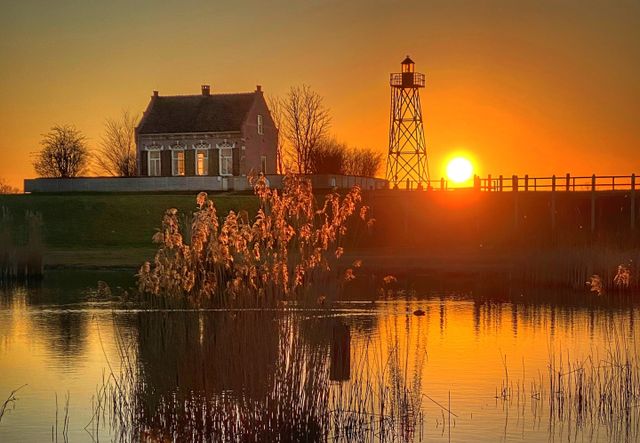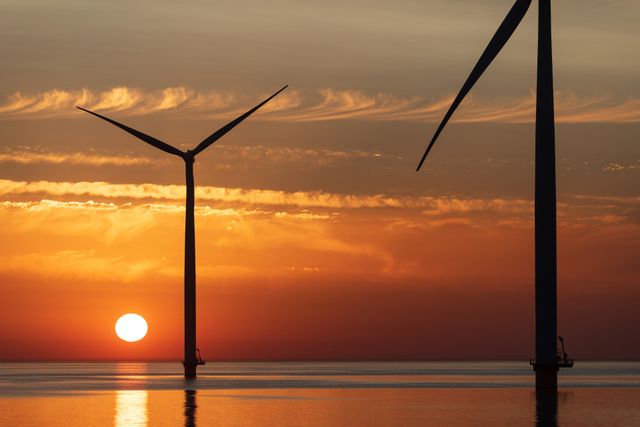Looking for the best spots? We have a few hot tips for you. What about feeling the wind in your face on top of the dyke? A visit to the Poldertoren, where you can look out over the entire polder. Or the former Zuiderzee island of Schokland, a World Heritage Site where time seems to stand still? There’s also a great piece of history at the Rotterdamse Hoek, where the rubble left after the German bombardment of Rotterdam in 1940 was used to finish the dyke. A 7.5 metre high lighthouse marks this special place.
World Heritage Site Schokland is an island on dry land that still towers above the polder landscape. Here and at the Oude Haven of Emmeloord you can still see and feel the Zuiderzee with a bit of imagination. Schokland was the first Dutch monument on the World Heritage Site list, which is entirely logical. The former Zuiderzee island contains nine national monuments and five archaeological sites. There is a lighthouse keeper’s house and a church. Plus hundreds of archaeological mounds, church ruins, dyke systems and other relics have been found. Let alone the remains of prehistoric and early historical communities.
More about Schokland
The Kuinderburcht is located in the Kuinderbos woods. This ancient ruin is a tangible reminder of the infamous Lords of Kuinre. From this place in the twelfth century they controlled the trade routes along the Kuinder and Linde rivers. They used the castle as a base for their plundering raids. The castle was probably built between 1165 and 1197 and was owned by the Lord of Kuinre, Heynric die Crane. In 1197 the Frisians destroyed it, and then it was rebuilt in 1204. After the draining of the Noordoostpolder, the foundation was partially reconstructed. Would you like to take a look at the Kuinderburcht? Start from the car park on the Hopweg. From there a paved path leads to the ruin.
More about the Kuinderburcht
“ FEAST FOR YOUR EYES ”
Oud-Kraggenburg is a former island (peninsula) in the Zuiderzee with a lighthouse keepers’ home built on a mound. At the base of the mound lies a small port of refuge where ships could wait out mist and storms. Nowadays, Oud-Kraggenburg is a port on dry land, raised above the polder landscape. A picturesque place thanks to the house with the white gable, the red lighthouse above the roof, and the cast-iron warning bell at the edge of the roof. Oud-Kraggenburg is only accessible during the Open Monument Days.
More about Oud-Kraggenburg
Have you always wanted to time travel? By visiting the Gesteentetuin (Boulder garden) on Schokland you go back about 200,000 years into the past. Spot here huge boulders left behind in the Noordoostpolder by the retreating glaciers from the last Ice Age. More information about this is available in the visitors’ centre. It’s a must-see during your visit to Schokland.
More about the Gesteentetuin
The devastating bombardment of the centre of Rotterdam by the Germans in the Second World War provided the foundation for the Rotterdamse Hoek in the Noordoostpolder. The 5.5 km long dyke was constructed with part of the remaining Rotterdam rubble. The builders named this corner the Rotterdamse Hoek in memory of the terrible event. A 7.5 metre high lighthouse marks the place.
More about Rotterdamse Hoek
The Rotterdamse Hoek is also known as the last ship graveyard in the Netherlands. Many ships ran into trouble in this area of the IJsselmeer lake. And farmers struggled on the other side of the dyke with the wet ground due to the large quantity of seepage water that rises up here. It is sometimes claimed that the area is haunted.
More about Rotterdamse Hoek